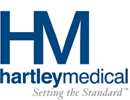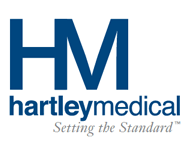Not long ago, at a pharmaceuticals convention, I was approached by a doctor who told me that he had, just minutes ago, met one of our quality assurance technicians at our booth. He simply wanted to say that he was profoundly impressed by the fact that we had such an individual on our staff ““ that it was a rarity and a pleasure. I was pleased and proud and concerned all at the same time. Because I know the industry reality that prompted the doctor’s praise.
There is, most assuredly, a widespread assumption out there that all pharmacies are pretty much the same”¦and that they’re doing everything that they should (or could) be doing to provide optimum quality products and safety assurance.
They’re not.
When you consider how many such companies are out there in the United States ““ one on every corner virtually — that percentage speaks compellingly to how far the industry has to go. It is appalling in a very real sense, considering how important quality control is to any business ““ but particularly when you’re talking about the health (sometimes a life or death consideration) ““ of the client (patient) involved.
Most pharmacies have a pharmacist and maybe two or three clerks or ancillary staff ““ the bare minimum. I’m sure most will tell you they don’t need any more than that”¦or that it would be nice if they could afford a quality control person. I know of only two pharmacies in the United States that have them.
The fact is, they really can’t afford not to have one. This position has been an integral aspect of Hartley Medical for the last seven years”¦and their job has expanded.
Our Quality Assurance Staff check our compounded preparations to make sure they are free from bacteria and endotoxins ““ impurities that are detrimental when in contact with human tissues.
Duties include the performing of environmental monitoring for bacteria and viable and non-viable air particulates. We utilize two different instruments to constantly evaluate and maintain the cleanliness of our compounding environment:
1) ACTIVE AIR SAMPLER — an industrial “dust buster” that brings 1000 liters of air across a growth plate that is about 50 millimeters wide. The device actively draws in the air across this device to obtain a qualified sample and to assess “bio burden.”
2) LAMINAR AIRFLOW WORKBENCH (aka LAFW OR IV HOOD) — a work service device that expels filtered air across a 6ft x 3ft sterile area defined by plexiglass walls and a hood above. These are actually work surfaces upon which we compound our sterile preparations. Standard is a Class 100 ““ filters 100 particles at .5 microns per cubic foot. We use a Class 10, which is cleaner by a factor of ten. Our IV hoods are tested every 120 days and certified by an outside lab. The industry standard is every 180 days”¦and before 2008 it was once a year.
We use the IV Hood to ensure a greater degree of certainty of cleanliness in all that we do”¦and all pharmacies should use them as well. So many practices and practice-employed instruments operate under the implied assurance of an eternally sterile environment”¦but it is not always so.
Ronald Reagan once said, “Trust, but verify.” We live that motto at Hartley Medical. The only way to ensure a sterile environment is to test it”¦ and continually test it after that.
Our Quality Assurance Staff verifies. We have never compromised the purity of our compounding or our compounding environment because we control said environment so completely and so carefully”¦trusting, but verifying.
Why is it so difficult for other companies to get on line with this essential function?
Cost. But here we’re really talking about owners who work at the bare minimum vs. those who reinvest in and actually grow their business.
Why is the public so reluctant to demand this assurance from their pharmaceutical providers?
They simply don’t know how important it is.
Well, I’m here to tell you that it is.


Leave A Comment